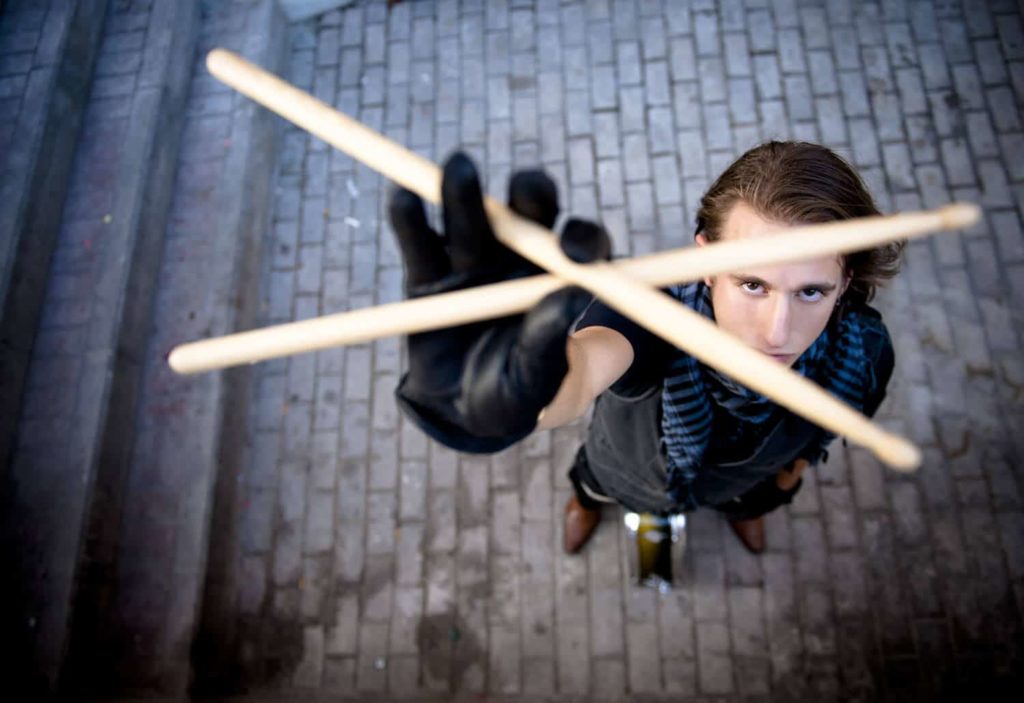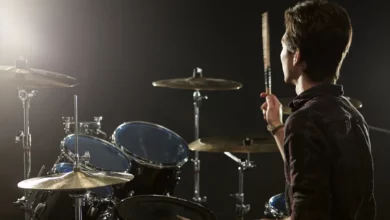
For new player, blisters on the hands are the most common drumming injury we face—it’s a widespread and rather irritating issue. They can show up on the inside of the thumb, the soft part of the fingers, and just about anywhere else the stick makes contact and friction.
Though annoying, these blisters from drumming must be dealt with, as they will form calluses eventually.
Key Takeaways
- Use finger tape or other adhesive products to add cushioning to the fingers
- Practice proper hand technique to reduce friction and pressure on the fingers
- Take breaks during practice or performance to allow blisters to heal
- Apply a protective ointment or lotion to the fingers before playing
- Try using different types or sizes of drumsticks to find the most comfortable fit for your hands
- Consider using drumstick grips or gloves designed explicitly for drummers
As a quick disclaimer – I am not, nor intend to portray, a health professional; this is my personal experience from playing the drums.
Dealing With Blisters From Playing The Drums
Fighting through the pain is one way to deal with blisters. My twelve-year-old self most likely did just this. However, keep your hands always clean if you continue to play with blisters, as infections can quickly arise from blistered hands.
The Best Way to Heal a Blister From Drumming
Blisters can be annoying, but luckily, you can take several steps to help heal them quicker. Here are some tips on how best to treat blisters:
- Clean the Area – Wash the area around the blister with warm water and soap. Make sure to dry it thoroughly afterward.
- Don’t Pop It – Popping a blister can be tempting, but it’s best to leave it alone as it may get infected if opened prematurely.
- Apply an Antibiotic Ointment or Cream – After cleaning and drying the area, apply an antibiotic ointment or cream to the blister to help prevent infection and speed up healing.
- Cover With a Band-Aid or Gauze Pad – Place a band-aid or gauze pad over the blister to protect it from further harm during the healing process.
By following these steps, your blister should start feeling better soon!
If your blisters are swollen and haven’t burst, you can use an ice cube to relieve some pressure.
While I can’t necessarily advocate for “popping” the blister, this is most likely the option I would take when I was younger. If you decide to drain your blister, wash your hands first, disinfect the area, and only use a sterilized needle.
Poke a small hole into the blister and have a tissue ready to absorb the fluid. Be sure to wash your hands once again after.
Use a bandage and cover the now-drained blister. You can return to playing now, but don’t push yourself if the pain is too much. The dressing should absorb much friction and provide support while you play.
If the irritation is detrimental to performance, consider using medical tape or trying out a pair of drum gloves.

As you continue to grow and practice drumming, you’ll slowly build calluses on your hands. But, for the most part, they won’t bug you and will toughen your hands up for drumming.
I’ve been playing the drums for twenty years. In that time, I’ve built up a handful of calluses on my hands. But, unfortunately, one stubborn callus on my left hand always cracks and bleeds during tours.
The main culprit is playing drums in warm clubs night after night. The sweat on the hands creates more friction than usual on the callus, causing it to crack.
In a pinch, my solution is to use gaffers tape, but sports tape would more effectively do the job. I have tried drum gloves, but they’re not for me.
Are Blisters from Drumming Dangerous?
In most cases, blisters from drumming are not dangerous and do not require medical attention. However, if the blister becomes infected or causes severe pain, it is best to seek medical advice.
Will Blisters from Drumming Turn to Calluses?
Blisters and calluses are both forms of skin thickening that occur due to repetitive friction or pressure on a particular area.
Blisters are usually painful and can prevent the use of that area, whereas calluses are thicker, harder, and generally not painful. Blisters can turn into calluses if the irritation continues, though it is more likely that the blister will heal and the skin will return to its original state.
The longer you play, the less you need to worry about blisters forming while playing drums. After a few years of playing, calluses should be present on your hands, and you’ll only see the occasional blister once in a while. Unfortunately, they always occur in the same spot on my thumb where the skin is soft.
Conclusion
All drummers will suffer from blisters at some point. So don’t get frustrated; get some bandages, and keep playing.
Blisters are entirely normal. If you fight through it, they’ll stop altogether. Of course, drummers aren’t the only ones fighting through blisters. Ask your guitar player about blisters. I’d argue they have a more challenging time.



